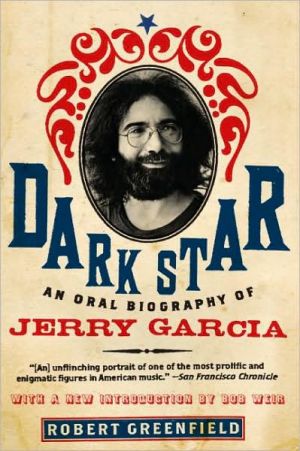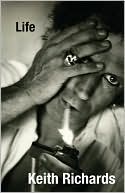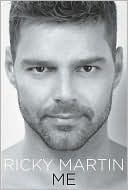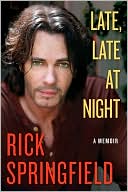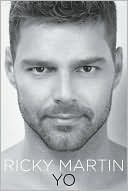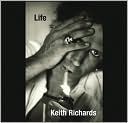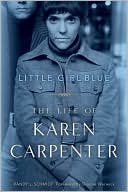Dark Star: An Oral Biography of Jerry Garcia
For more than thirty years, Jerry Garcia was the musical and spiritual center of the Grateful Dead, one of the most popular rock bands of all time. In Dark Star, the first biography of Garcia published after his death, Garcia is remembered by those who knew him best. Together the voices in this oral biography explore his remarkable life: his childhood in San Francisco; the formation of his musical identity; the Dead's road to rock stardom; and his final, crushing addiction to heroin....
Search in google:
Dark Star reveals Jerry Garcia through the eyes of those closest to him: the ex-wives and lovers who lost him to the road, the close friends who watched him battle a long-running heroin habit, the children of fellow members of the Grateful Dead and the musicians who looked up to him as a guru. Together these voices present a striking portrait of a compelling artist - psychedelic guru, addict, outlaw, and rock'n'roll icon. Originally published in 1998, this title is now available for the first time in the United States. Publishers Weekly Published to coincide with the first anniversary of Jerry Garcia's death, this insightful life of the Grateful Dead guitarist and cultural icon features reminiscences from over 60 people who knew him, from his boyhood in Menlo Park, Calif., to his death. There are family stories from his brother Tiff, Acid Test memories from Ken Kesey, rueful war stories of married life from ex-wife Mountain Girl and harrowing medical reports from his last doctor. As an oral biography, the book necessarily lacks a fixed point of view. Indeed, there are many Jerry Garcias on display here, and they often contradict one another: gifted improvisational performer yet tyrannical perfectionist; loving father yet shameless philanderer; hero to millions yet self-pitying addict. As the years march on, Garcia's early passion for music and youthful joy in performance come through less clearly, overwhelmed by business squabbles and rampant substance abuse. Likely a must-buy for mourning Deadheads, the book should also interest casual fans (if there are any), as well as those curious about the San Francisco 1960s scene or about the punishing coincidence of a brilliant but vulnerable artist and an extraordinary time. (Aug.)
David Nelson: Jerry said that he'd gotten a gig offer if we could get a band together. Pete Albin was getting together this College of San Mateo Folk Music Festival. So we put together the band for that. Me, Bob Hunter, and Jerry. Hunter was playing mandolin or bass. Doubling. At first, we didn't even have a mandolin. The very first gig, it was bass, guitar, and banjo. We had all taught ourselves how to play. We used to slow records down or play with the same track on a record over and over again to learn things. We drilled a lot because we were paralyzed with stage fright. The first few times he played, Jerry had to have it on automatic.\ Sara Ruppenthal Garcia: He lived for music. He'd be in a bad mood if he couldn't practice for several hours a day. At this point, he was very ambitious. He wanted to do something big. But there wasn't any show business niche for him. \ Peter Albin: Jerry was always witty. Wry humor. "Hey man, hey, hey. What're you doing, eh, eh, eh." But I didn't find him to be one of the friendlier guys in the world. He wasn't, "Hey, Pete. How are you doing?" He was always, "Hey, hey man, hey." He was cool. He was watching everybody but he was not quiet. He was very vocal. Jerry talks on that series done by the BBC and PBS, History of Rock 'n' Roll. That was the way he talked then, too. Pretty much the same. I don't think he really changed. \ Suzy Wood: Jerry did seem older. He was separate to himself. You know how a lot of times people are kind of formless but what makes them who they are is the group they're a part of? You pull any little piece out of it and they're essentially a representative of the group. Jerry wasn't like that. Jerry was the thing that groups formed around and a certain group formed around him when he and Marshall Leicester were together. Marsh was very very bright, and Jerry was very very bright and they had incredible amounts of fun aside from music. \ Sara Ruppenthal Garcia: Those guys had such keenly wry senses of humor. Those three. David Nelson, Hunter, and Jerry. The sidekicks. They loved each other a lot and played wonderful music together and shared a kind of an off-the-wall, quirky sensibility. I wasn't good enough to play with the three of them. But we started doing old-timey music. I met Marshall and Suzy [Wood] Leicester. The four of us did some performances in places in the city like the Coffee Gallery or Coffee Cantata and we were quite well received. I threw myself into the study of these old tunes and just loved it. Jerry and I played at the Tangent in Palo Alto. We had a little duo. \ Suzy Wood: Jerry took up with Sara. She was straight and darling and impressive as hell. She was a Stanford student and her dad was a pilot and my sense was that they were a cut or two above the general riffraff. \ Sara Ruppenthal Garcia: We sang together and I played a little autoharp and my little rosewood Martin guitar. He played most of the instruments. We sang well together. We took turns. One of us would sing the verses and we'd join each other on the chorus. The surviving tape is really awful. It sounds like the Chipmunks. But we liked singing together, we were good at it, and people seemed to enjoy it. Remember that song, "Walk Right In" by the Rooftop Singers? That was popular then. We figured we could do something better than that. So that was our plan. \ John "Marmaduke" Dawson: I was just another folk guitar player when they had the hootenannies at the Tangent on Wednesday evenings. There was a back room there and people would get together and put a little bit of a trio or a duet together. "Hey, you want to play some stuff with me tonight?" "Sure. What are we going to play?" "Okay, let s do this one." "You want me to capo up and play it in a different key so we get two different guitar sounds?" "Yeah, okay, let's go." There was a lot of that going on. Just instant groups coming together and falling back apart again. At that point, Jerry was the best picker in town. Along with Jorma and a guy named Eric Thompson. Jerry was one of the hot pickers and David Nelson was one of the hot pickers. \ Jorma Kaukonen: I think we all taught each other a lot. One of the really neat things about that period and I don't know if this was a function of the period or just that we were younger and more open-minded but there was a lot of jamming and that doesn't happen that much anymore. In those days, it happened almost all the time. In terms of who was the best player, keep in mind that as youngsters, we were all bad boys. I'm sure all of us thought we were the coolest thing in our external persona. Internally of course, it was, "God. I don't know what I'm doing here." \ John "Marmaduke" Dawson: Even then, I think Jerry had that beatnik cutting edge. Because of his history. He never did like cops and he never did like the Army even though he was in it for a while. He was a good maze rat. It only took him one try to find that out. He learned that course real quickly. It didn't take two tries for him. \ David Nelson: At the College of San Mateo Folk Music Festival, Jerry did a three-part thing where he started out doing solo stuff from the old ballads. Then he got into the twenties and thirties with string band music. We'd be an old-time string band and play old stuff. Then, modern age. We played bluegrass in the third section. That was really a nice little display. \ Peter Albin: We were all local folkies but he was a little bit higher on himself than the other people because he had more talent. He did and he knew it. When he first started playing banjo, he'd come up to you and say, "Hey, dig this," and he'd play "Nola" on the five-string banjo. And he'd go faster like Roger Sprung. It was something you could never play. He was excellent but he put it in your face. He knew who did everything. He did his research. He did his homework. I don't want to make him sound as if he was unfriendly and not willing to share things because he was. As a matter of fact, when I put on a folk music festival during this time at the College of San Mateo through the auspices of the Art Club, Jerry and his group played there. We also did a guitar workshop where he did finger picking and I did flat picking. \ David Nelson: The thing about Jerry was that you could come up to him and ask him how to do something and he would show you, which was an incredible thing when you think back about those times. There wasn't this free atmosphere of exchange. I remember asking him a few questions and he came and showed me in detail how to do certain finger-style things. \ Peter Albin: The musicians respected him and the audience at the College of San Mateo show thought he was good. But God, he took so long to tune. It was like he went for like some sort of philosophical tuning. I remember my father who always came to these gigs said, "When is that guy going to stop tuning?" That was his major complaint after the gig. He said, "God, that guy Garcia. When is he going to learn how to tune that damn thing? He spent about like a half hour on that goddamn banjo tuning that fucking thing." The audience would be getting restless and Jerry would be going, "Just a second, folks. You want me to play good here, I got to be in tune, blah, blah, blah." He'd make some more clever remarks. "And now a Chinese song. 'Too-Ning.'" That was the classic line during the sixties. Named after a city in China. \ Sara Ruppenthal Garcia: There was a folk music festival in Monterey in the summer of '63. Chris Strachwitz, who still owns Arhoolie Records, brought in old-timey people, the original guys who were still alive. I don't know if Doc Watson was there but I think he brought Clarence Ashley. Clarence White may have come. I don't know how we afforded the gas to get down there. I know that we didn't have any food. We didn't have any place to stay. We slept in the car. I was pregnant. It was just peanut butter and bread if we were lucky. Bob Dylan played there. Lots of things had been going on. Small performances and workshops. Connecting with some of the real seminal American folk music. Dylan did more of a performance in a big space. He came out by himself on stage and brought a little amplifier and plugged in his guitar. We were so outraged by the amp that we got up, walked down the center aisle to the stage, and marched off. It was like, "We are not going to be a part of this." Amplified guitar? This wasn't pure. For money, Jerry had played in a rock 'n' roll band with Troy Weidenheimer. They played fraternity parties. What they had to put up with was awful. And in high school, Jerry had played on Bobby Freeman's "Do You Wanna Dance?" But he didn't consider that exactly worthy. What he really wanted was to play with Bill Monroe. That would be the pinnacle of success. \ David Nelson: Hunter wasn't really as dedicated as we were. He wasn't ready to die for it like we were. We were insane. We were nuts for bluegrass. Back then, you couldn't get this music in record stores. You had to know some real big-time collector. One lived up at Stanford. I think his father was a professor. We would go over there and pester him to play tapes for us because he had a collection like the Dead tape system now. People would give us copies and we'd trade tapes of different bluegrass gigs. So we'd actually get to hear the real thing. Not a studio slicked-up version. I remember going over there lots of times, sitting on that couch and listening to stuff. I would just never get tired of it. All these other guys were older than me. So when they decided that was enough, we had to go. I'd always be saying, "Oh, can we hear some more?" Jerry would say, "No. Don't make him mad. Don't piss him off, Nelson. Don't wear out our welcome." Because we wanted to be able to do that most any time. That was where I first heard the Stanley Brothers live and Flatt and Scruggs live and Clarence White, the guitar player. It was amazing. \ Peter Albin: Garcia and Nelson and Hunter concentrated on heavy-duty bluegrass. Bob Hunter played well but he wasn't your real ethnic type like you find at the music colleges. He wasn't going to delve into exactly how those bass lines were played. He was a trumpet player. So he played simply. \ David Nelson: We were the Wildwood Boys and that lasted about only a year at the most. Garcia had a disagreement with Hunter about were we going to get serious about bluegrass. I remember one practice when they were going back and forth and I was just stepping out of it. I think Garcia put it to him and said, "You're really going to have to get serious or I'm going to have to get another mandolin player." Bluegrass is a staunch kind of music. It's not easy and if you don't really dedicate yourself to it, you'll never make it. They had sort of a falling out and Hunter just quit. So we went and found Sandy Rothman. There were these Berkeley people who played bluegrass. We went over to Sandy's house one night and Sandy said he'd like to play with us but he played guitar and he didn't want to make me not play guitar or anything. Garcia just talked me into it. He got an F12 and said, "You can do it. You can do it." He put a mandolin in my hand and the next thing I knew, we were doing gigs and I was playing mandolin. I had a few weeks to get it together and then we were the Black Mountain Boys. \ Sandy Rothman: These two guys came to Campbell Coe's Campus Music Shop just off Telegraph Avenue in Berkeley. I seem to recall that Garcia pointed his finger at me and said, "Are you Sandy Rothman? We want you to be our new guitar player." Really bold and confident and no question about it. Like it was going to happen. I started going down to Palo Alto by Greyhound bus with my guitar every weekend. \ Clifford "Tiff" Garcia: The next time I saw Jerry was actually just before he got married. A couple of months before the wedding he came up to the city with Sara. She was pregnant. So it was like, "We're going to get married. We have to get married quick. Because it'll start to show and people will talk and blah blah blah." \ Sara Ruppenthal Garcia: It was Jerry's idea that we get married. When I found out I was pregnant, he said, "I always wanted to be married!" Poor guy. We had no idea. No idea. We were babies. \ Clifford "Tiff" Garcia: He went to my grandmother Tillie first. Because there was always somebody there at Tillie's house. My grandmother called my mom. My mom went over and then I went over and we all met Sara at the same time. \ Sara Ruppenthal Garcia: When we decided to get married, he told me his mother and his grandmother both lived in the city and I said, "We've got to go meet them. We've got to bring them to the wedding. We have to do that." He had run away from home when he was sixteen or seventeen. Before that, he'd been pretty much raised by his grandmother, Tillie. Tillie was something else. \ By the time I met her in the spring of '63, she was starting to get senile and it really really upset him. But we went and found her and she was so happy to see him. And so thankful to me for bringing him. Coming out of there, he was shaking his head, saying, "Oh, she's losing it." It was so sad for him because he'd had a tough childhood. Can you imagine how terrifying it would be to watch your father drown? Think about yourself at five. Your father is out fishing in his wading boots in the ocean and he gets swept away? You're really conscious at five and full of fears. What a terrible loss. \ Jerry talked to me about losing his finger. He talked about losing his father. Later on, when his mother and stepfather moved to Menlo Park, Jerry was miserable in suburbia. He didn't fit in there. I think these were formative events. We don't have a lot of memories from our childhood. The things that we remember, we do for a reason. They're so full of meaning. The accident in which Paul Speegle was killed was another absolutely formative event. All these formative events in his life were difficult, tragic. Loss. Utter loss. \ Jerry's mother, Ruth, had really wanted Jerry to be a girl. She'd had a boy and she doted on him. Tiff was the favorite kid. Tiff was the star. When Jerry took me that same night to meet her in her little place in Diamond Heights, there was a photo on top of the TV. Tiff in his Marine suit with the gun. On top of the TV. She watched TV all the time. I loved that woman a lot but she and Jerry didn't have a very good relationship. \ His whole family came to the wedding. I was making an honest man out of him. We got married real quick. At the Unitarian Church in Palo Alto. By the Reverend Danforth K. Lyon. Or maybe it was K. Danforth Lyon. Jerry's friends came to the party at Rickey's on El Camino. He and Hunter and Nelson played bluegrass. They called it a shivaree. \ Clifford "Tiff" Garcia: Jerry had a goatee. In fact, Jerry had a goatee in the ninth or tenth grade f
\ Publishers Weekly - Publisher's Weekly\ Published to coincide with the first anniversary of Jerry Garcia's death, this insightful life of the Grateful Dead guitarist and cultural icon features reminiscences from over 60 people who knew him, from his boyhood in Menlo Park, Calif., to his death. There are family stories from his brother Tiff, Acid Test memories from Ken Kesey, rueful war stories of married life from ex-wife Mountain Girl and harrowing medical reports from his last doctor. As an oral biography, the book necessarily lacks a fixed point of view. Indeed, there are many Jerry Garcias on display here, and they often contradict one another: gifted improvisational performer yet tyrannical perfectionist; loving father yet shameless philanderer; hero to millions yet self-pitying addict. As the years march on, Garcia's early passion for music and youthful joy in performance come through less clearly, overwhelmed by business squabbles and rampant substance abuse. Likely a must-buy for mourning Deadheads, the book should also interest casual fans (if there are any), as well as those curious about the San Francisco 1960s scene or about the punishing coincidence of a brilliant but vulnerable artist and an extraordinary time. (Aug.)\ \ \ \ \ Library JournalGreenfield nicely complements the traditional journalistic approach of Sandy Troy's Garcia bio, Captain Trips (Thunder's Mountain, 1994), by piecing together recent interviews with nearly 70 Grateful Dead friends and associates to tell a surprisingly cohesive story of the guitarist's life. Save for other Dead members, Greenfield, who co-wrote rock impresario Bill Graham's autobiography, My Life Inside Rock and Out (LJ 9/1/92), gained access to virtually all of the people who knew Garcia intimately. The last half dwells painfully on Garcia's heroin addiction, his 1986 lapse into a diabetic coma, and his fatal 1995 heart attack, but readers will finish with a better understanding of this charismatic musician. Recommended for larger popular music collections.Lloyd Jansen, Stockton-San Joaquin Cty. P.L., Cal.\ \
